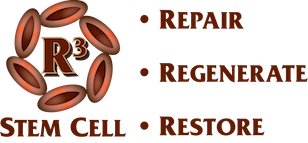
Umbilical Cord Stem Cell Therapy
FAQ’s Regarding Umbilical Stem Cell Therapy
What is the Purpose of Umbilical Cord Blood?
Throughout a pregnancy, the umbilical cord attaches the baby’s belly-button to the placenta, which is attached to the inner wall of the uterus and communicates directly with the mother’s blood supply. This supplies oxygen and nutrients to the developing fetus.
What are Umbilical Cord Stem Cells?
The umbilical cord contains stem cells in various regions including:
- Umbilical Cord Tissue Itself
- Umbilical Cord Blood
- Wharton’s Jelly
In addition to stem cells, the umbilical cord and surrounding tissue contains an extensive amount of growth factors, exosomes, secretomes, cytokines, mRNA and other cell types. Over 80 different growth factors are present, which are amazing at facilitating repair and regeneration of necessary tissues.
The stem cells change into necessary cell types such as blood and nerves, and this helps to repair and replace any areas of the body that may have been damaged or injured. The two types of umbilical cord blood stem cells that are available for harvesting are:
- Cord blood stem cells which are also called hematopoietic stem cells. These are similar to the stem cells that are found in the bone marrow.
- Cord tissue stem cells which are also called mesenchymal or adult stem cells.
How are Umbilical Cord Blood Stem Cells given to a Patient?
The treatment of administering umbilical cord blood stem cells occurs either by injection or infusion. During processing, all DNA factors are removed. Because of this – no rejection occurs during the treatment and no blood type matching is necessary.
What is the Prognosis of Patients who received Umbilical Cord Blood Stem Cells?
Most patients who undergo stem cell procedures from umbilical cord tissue achieve exceptional outcomes. This includes arthritis, autoimmune conditions, Lyme, neuropathy, neurodegenerative conditions, organ failure and more. After 10,000 plus procedures at over 30 Centers nationwide, results at R3 exceed 85% excellent outcomes. We have a lot of very happy patients!
Can Umbilical Cord Blood and tissue be Stored?
Yes, umbilical cord blood and tissue can be safely stored at FDA regulated labs under cryogenic conditions. This keeps the regenerative cells in a viable state until needed for use.
